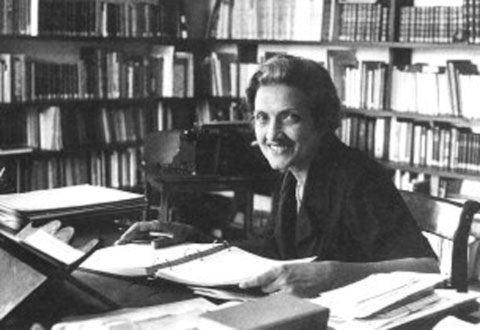"...the Imagination (or love, or sympathy, or any other sentiment) induces knowledge, and knowledge of an 'object' which is proper to it..."
Henry Corbin (1903-1978) was a scholar, philosopher and theologian. He was a champion of the transformative power of the Imagination and of the transcendent reality of the individual in a world threatened by totalitarianisms of all kinds. One of the 20th century’s most prolific scholars of Islamic mysticism, Corbin was Professor of Islam & Islamic Philosophy at the Sorbonne in Paris and at the University of Teheran. He was a major figure at the Eranos Conferences in Switzerland. He introduced the concept of the mundus imaginalis into contemporary thought. His work has provided a foundation for archetypal psychology as developed by James Hillman and influenced countless poets and artists worldwide. But Corbin’s central project was to provide a framework for understanding the unity of the religions of the Book: Judaism, Christianity and Islam. His great work Alone with the Alone: Creative Imagination in the Sufism of Ibn ‘Arabi is a classic initiatory text of visionary spirituality that transcends the tragic divisions among the three great monotheisms. Corbin’s life was devoted to the struggle to free the religious imagination from fundamentalisms of every kind. His work marks a watershed in our understanding of the religions of the West and makes a profound contribution to the study of the place of the imagination in human life.Search The Legacy of Henry Corbin: Over 800 Posts
Saturday, April 7, 2012
Mundus imaginalis na poesia de Cecília Meireles
Letras de Hoje, Vol. 46, No 2 (2011)
Pontifícia Universidade Católica do Rio Grande do Sul
poemas, a alusão periódica a um “Centro” (axi mundi), um lugar intermediário, temporariamente alcançado pelo Eu-lírico, o qual concentra em si a plenitude e a energia da fonte da Vida, permitindo a intuição do Inteligível ou Absoluto. Esse ponto de intersecção é chamado, por Henry Corbin, de mundus imaginalis, valendo-se do latim para traduzir a expressão árabe do sufista andaluz Ibn Arabî. Esse mundo intermediário – das Ideias-imagens, das Figuras-arquétipos, dos corpos sutis, da “matéria imaterial” – situar-se-ia entre o universo apreensível pela pura percepção intelectual (o universo das inteligências querubínicas) e o universo perceptível pelos sentidos. Os poemas “Medida da significação”, do livro Viagem (1939), e “O enorme vestíbulo”, de Retrato natural (1949), ilustram essa figuração na poesia ceciliana, presente até, e sobretudo, no seu último livro: Solombra (1963).
Palavras-chave: Cecília Meireles; Mundus imaginalis; Centro; Símbolos
Resume: Dès les premiers ouvrages de Cecília Meireles, il est possible d’identifier dans certains des poèmes l’allusion périodique à un “centre” (axi mundi), un lieu intermédiaire, temporairement atteint par le Moi-lyrique, qui contient en soi la plénitude et l’énergie de la source de la Vie et permet l’intuition de l’Intelligible ou de l’Absolu. Henry Corbin nomme ce point d’intersection mundus imaginalis; il se vaut du latin pour traduire l’expression arabe du soufi andalou Ibn Arabî. Ce monde intermédiaire – des idées-images, des figures-archétypes, des corps subtils, de la “matière immatérielle” – se situerait entre l’univers saisissable par la pure perception intellectuelle (l’univers des intelligences chérubiniques) et l’univers perceptible par les sens. Les poèmes Medida da significação [Mesure de la signification] du livre Viagem (1939) et O enorme vestíbulo [L’énorme vestibule) de Retrato natural (1949) illustrent cette figuration propre à l’auteur, particulièrement présente dans son dernier ouvrage: Solombra (1963).
Mots-clés: Cecília Meireles; Mundus imaginalis; Centre; Symboles
this reference courtesy of Daniel Proulx (!)
Subscribe to:
Post Comments (Atom)









No comments:
Post a Comment